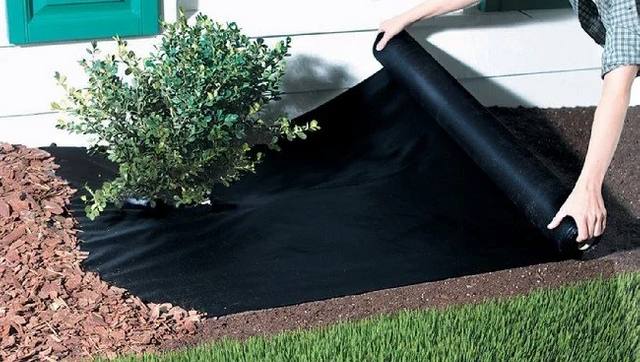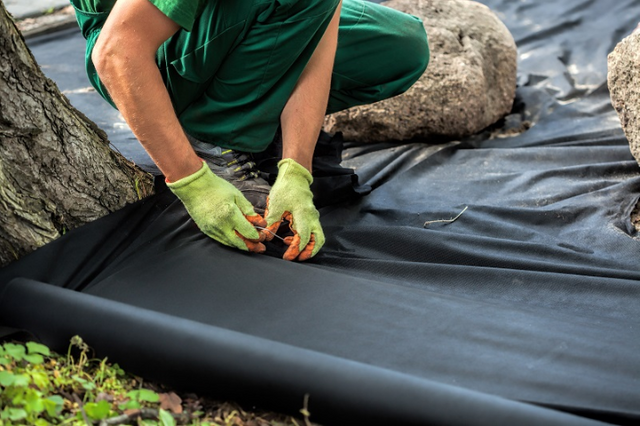Landscape fabric advantages and disadvantages
Landscape fabric is a great option for gardeners and homeowners to cover their landscape areas and prevent weeds growth. Whether you call weed block fabric, landscape fabric or weed barrier fabric, landscape fabric is a safe and chemical-free solution for blocking and preventing weeds. In this article, we're going to talking about landscape fabric pros and cons.
What is landscape fabric?
Landscape fabric is a textile material which used to prevent and kills weeds by inhibiting their exposure to the sunlight. Especially, gardeners and homeowners are using landscape fabric. Landscape fabric not only prevents weeds, but also they allow water, air, nutrients to pass-through for current plants. That's why landscape fabric is an ideal option for plants. Landscape fabric can be made from both natural and synthetic fibers.

Types of landscape fabrics:
Woven:
This type of landscape fabric made from linen or polypropylene fabric and woven fabrics offers tiny holes within the construction of the material for water and nutrient exchange with the soil. This type of weed fabric is perfect for garden, shrubbery, and trees.
Non-woven:
Non-woven landscape fabrics typically made from polypropylene or polyester fabric, this kind of landscape weed fabrics last for a long time.
Thickness:
Each brand offers a different material thickness for each type of fabric, thicker landscape fabric tends to be last for a long time. This types of weed fabric are very good, but it is a little bit expensive.
The function and cost of landscape fabric:
Landscape fabrics are constructed from woven fibers with perforations incorporated into the fabric that allow air and water to pass through to reach the plant's roots. And some weed fabric brands offer UV protection to maintain the life of landscape weed fabric.

Landscape fabrics come in rolls, especially at last 3 to 6 feet wide and 25 to 200 feet in lengths. It can cost you from around $ 45 cent up to 85 cents per sq.feet it depends on brands and thickness, thicker landscape fabric will cost you a little bit more. And then, landscape staples, each staple will cost you around $ 10/11 cents.
Pros of landscape fabric:
Most of the homeowners and gardeners are agree that the best place for landscape fabric is around the shrubs and trees, where landscape fabric can be installed and topped with good quality mulch to hopefully last for a long time( for years). Here are some pros of landscape fabrics listed below:
- They're Chemical-free, which means that the landscape fabric is safe for us and the environment. And this is one of the great pros of landscape fabric.
- Landscape fabric prevents weeds seeds buried in the soil beneath form sprouting.
- It reduces the need to use herbicides for weed block.
- Landscape fabric suitable for use on slopes where erosion is a big problem.
- Landscape fabric save on watering.
- It helps retain soil moisture by reducing evaporation.
- Landscape fabrics are environment-friendly, so it better than using the chemical to kill weeds.
Also, there are so many pros available for landscape fabrics.
Cons of using landscape fabrics:
If you purchase high-quality landscape fabric and install it correctly, it will last for a long time, and you'll be benefited from it. But there are some of the cons of using landscape fabrics still available, which are listed below:
- Landscape fabric discourages garden-friendly earthworms, that need to reach the soil surface. So, landscape fabric will make your garden soil compacted and soil unhealthy.
- It acts as a barrier to organic materials biodegrading to the soil, that lead to an unhealthier soil structure on your garden ground.
- Some weeds still can grow in the mulch, which used for covering the fabric.
- It is time-consuming to install, especially for around existing plants.
5.landscape fabrics can kill your current plants ( not so many, very little).
Some tips for installation:
If you want to use landscape fabric, here are some tips listed below for you, which will help you and make the job much easier.
A. At first, you must measure your area so that you can have an idea about how much fabric and staples you'll need.
B. Now lay your fabric over the area, being sure to overlap the edges by 7to 9 inches and then cutting in the shape of the garden bed as needed. After that, you must allow the fabric to hang over the border of the garden bed 2/3 inches which you've to tucks into the soil when you staple it in the place.
C. Now staple the landscape fabric to the soil, placing a staple about every 8/9 inches to make sure it doesn't come loose.
D. After that, cut an x where you want to plant and fold the cut area back in the place when you've finished planting.
E. Now add a 2/3 inches layer of inorganic or organic mulch over the landscape fabric and finish the job.
Final word:
Now you know everything about landscape fabric and hope this content will help you in choosing and installing landscape fabric. Also, it will save your time, and make your job much easier.
Find the best selection of landscape fabric and get price match if you find a lower price.